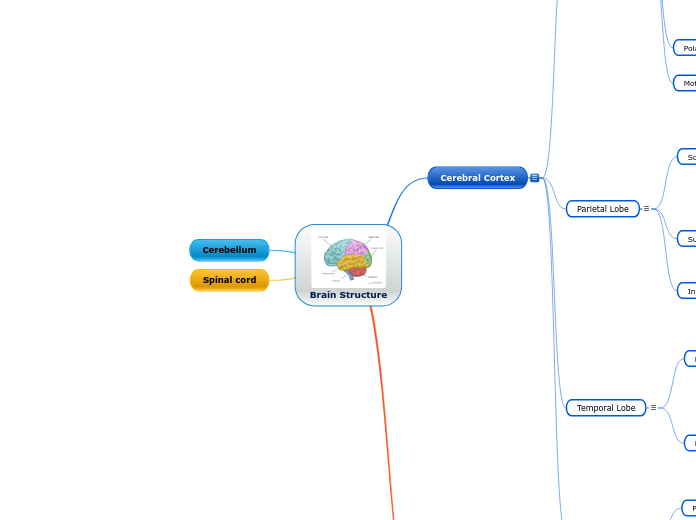by Mohanty Sara 3 years ago
249
Brain Structure
The brainstem, located at the base of the brain, is essential for regulating involuntary actions such as heartbeat and breathing, comprising the midbrain, pons, and medulla oblongata.

by Mohanty Sara 3 years ago
249

More like this
The brainstem, area at the base of the brain that lies between the deep structures of the cerebral hemispheres and the cervical spinal cord and that serves a critical role in regulating certain involuntary actions of the body, including heartbeat and breathing.
The brainstem (brain stem) is the distal part of the brain that is made up of the midbrain, pons, and medulla oblongata. Each of the three components has its own unique structure and function. Together, they help to regulate breathing, heart rate, blood pressure, and several other important functions.
The cerebral cortex is the thin layer of the brain that covers the outer portion (1.5mm to 5mm) of the cerebrum. It is covered by the meninges and often referred to as gray matter. The cortex is gray because nerves in this area lack the insulation that makes most other parts of the brain appear to be white. The cortex also covers the cerebellum.
The cortex makes up about two-thirds of the brain's total mass and lies over and around most of the brain's structures. It consists of folded bulges called gyri that create deep furrows or fissures called sulci. The folds in the brain add to its surface area and increase the amount of gray matter and the quantity of information that can be processed.
Research the company
You should find and learn as much as you can about the company where you are having an interview.
The interviewer will want to see what you know about them and why you chose the company.
Doing your homework will show that you are really interested.
The occipital lobe is the part of the human brain responsible for interpreting information from the eyes and turning it into the world as a person sees it.
The occipital lobe has four different sections, each of which is responsible for different visual functions.
Disorder in the occipital lobe may cause disorder in the vision or the brain itself. There may also be a link between the occipital lobe and conditions such as epilepsy.
Brodmann area 19
Brodmann area 18
Brodmann area 17
The temporal lobe is one of the four major lobes of the cerebral cortex. It is the lower lobe of the cortex, sitting close to ear level within the skull.
The temporal lobe is largely responsible for creating and preserving both conscious and long-term memory. It plays a role in visual and sound processing and is crucial for both object recognition and language recognition.
Dysfunction in the temporal lobe may cause dysfunction in the mind.
A few chronic conditions have an association with temporal lobe damage.
What can you do for this company that someone else can't?
Type in several unique traits that will turn you into the perfect candidate for the position.
Parahippocampal gyrus
Brodmann area 27
Amygdala
Hippocampus
Brodmann area 36
Brodmann area 35
Standard cerebral cortex
Inferolateral surfaces
Lateral surfaces
The parietal lobe is one of the major lobes in the brain, roughly located at the upper back area in the skull.
It processes sensory information it receives from the outside world, mainly relating to touch, taste, and temperature.
Damage to the parietal lobe may lead to dysfunction in the senses. There are also some health conditions associated with parietal lobe damage.
The parietal lobe is one of the four lobes of the cerebral cortex in humans. It sits near the upper back portion of the skull, close to the parietal bone
What do you know about the company?
Type a short description of the company's background.
Angular gyrus caudally
Brodmann area 39
Supramarginal gyrus rostrally
Brodmann area 40
Brodmann's areas 7
Brodmann's areas 5
Postcentral gyrus
Brodmann areas 3b
Brodmann areas 3a
Brodmann areas 2
Brodmann areas 1
The frontal lobe is the part of the brain that controls important cognitive skills in humans, such as emotional expression, problem-solving, memory, language, judgment, and sexual behaviours. It is, in essence, the “control panel” of our personality and our ability to communicate.
It is also responsible for primary motor function, or our ability to consciously move our muscles, and the two key areas related to speech, including Broca’s area.
The frontal lobe is larger and more developed in humans than in any other organism.
As its name indicates, the frontal lobe is at the front of the brain. The right hemisphere of the frontal lobe controls the left part of the body, and vice versa.
Why do you want to work for this company?
Think of what you can do for them, not of what they can do for you.
Cingulate gyrus
Gyrus rectus
Medial orbital gyrus
Posterior orbital gyrus
Anterior orbital gyrus
Lateral orbital gyrus
Frontomarginal gyrus
Transverse frontopolar gyri
Inferior frontal gyrus
Middle frontal gyrus
Subtopic
Superior frontal gyrus